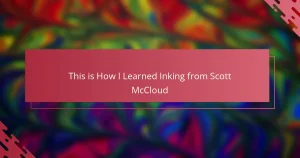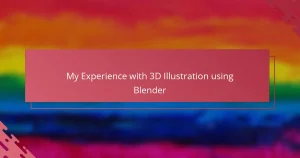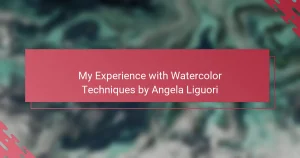Key takeaways
- Realism in portraits focuses on authenticity over perfection, capturing emotional nuances and imperfections.
- Key techniques include layering colors gradually, observing subtle skin tone variations, and embracing asymmetries for a lifelike representation.
- Effective portrait creation starts with solid outlines, followed by careful attention to light and shadow, culminating in detailed finishing touches.
- Showcasing realism in portfolios involves presenting pieces that connect viewers on a human level and sharing insights into the artistic process.
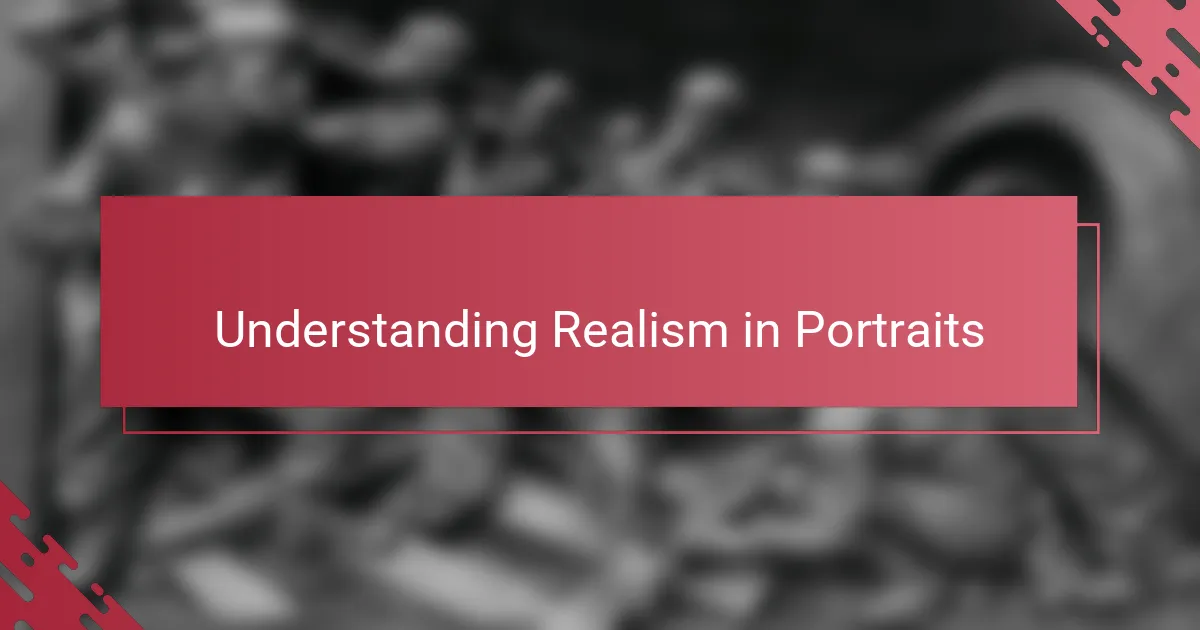
Understanding Realism in Portraits
Realism in portraits, to me, is about more than just capturing a face accurately; it’s about revealing the essence behind the eyes. Have you ever noticed how a subtle shadow or a slight wrinkle can tell a whole story? That’s where true realism begins—when the portrait feels alive, not just seen.
I remember struggling early on, trying to perfect every line and shade, but feeling my work lacked soul. It wasn’t until I focused on the little imperfections—the asymmetries and nuances—that my portraits started to resonate emotionally. Realism isn’t perfection; it’s authenticity.
What does it mean to capture someone’s reality? For me, it means observing patiently, understanding expressions beyond the obvious, and translating that intimate knowledge through my strokes. It’s a deep conversation between artist and subject that goes beyond the surface.
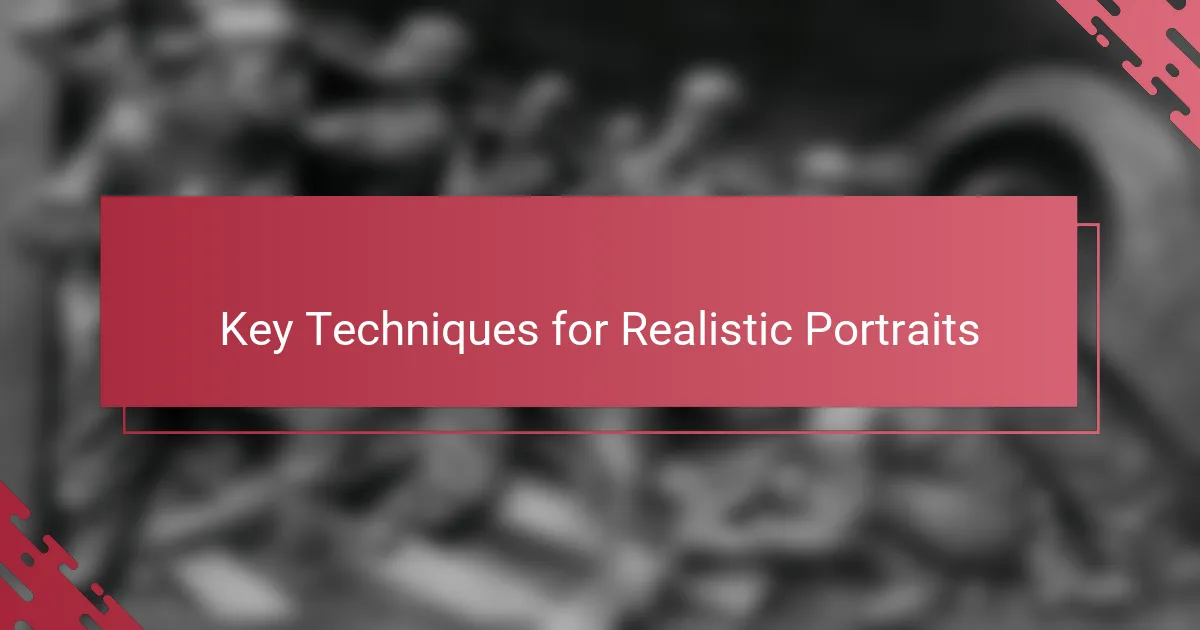
Key Techniques for Realistic Portraits
One technique I rely on heavily is layering. Instead of rushing to complete the portrait in one go, I build up tones gradually, letting each layer inform the next. This approach gives skin texture depth and light a natural, soft quality that avoids a flat or plastic look. Have you ever stared at a painting and felt the skin lacks life? That’s usually because the artist missed those delicate shifts in tone.
Another trick I’ve found invaluable is focusing on subtle color variations within the skin. Real skin is rarely one flat tone—it carries hints of blues near veins, warm reds around cheeks, and cooler shadows in hollows. Pinpointing and blending these hues has made my portraits jump off the page. It’s like discovering a hidden palette that breathes vitality into the face.
Finally, I always remind myself to paint what I see, not what I think should be there. Our brains tend to idealize or simplify features, but capturing realism means accepting imperfections — uneven eyebrows, a slight tilt of the lips, asymmetry in the eyes. These quirks make the subject human and honest. Have you ever painted a “perfect” face only to find it lifeless? Allowing flaws in has been a game-changer for me.
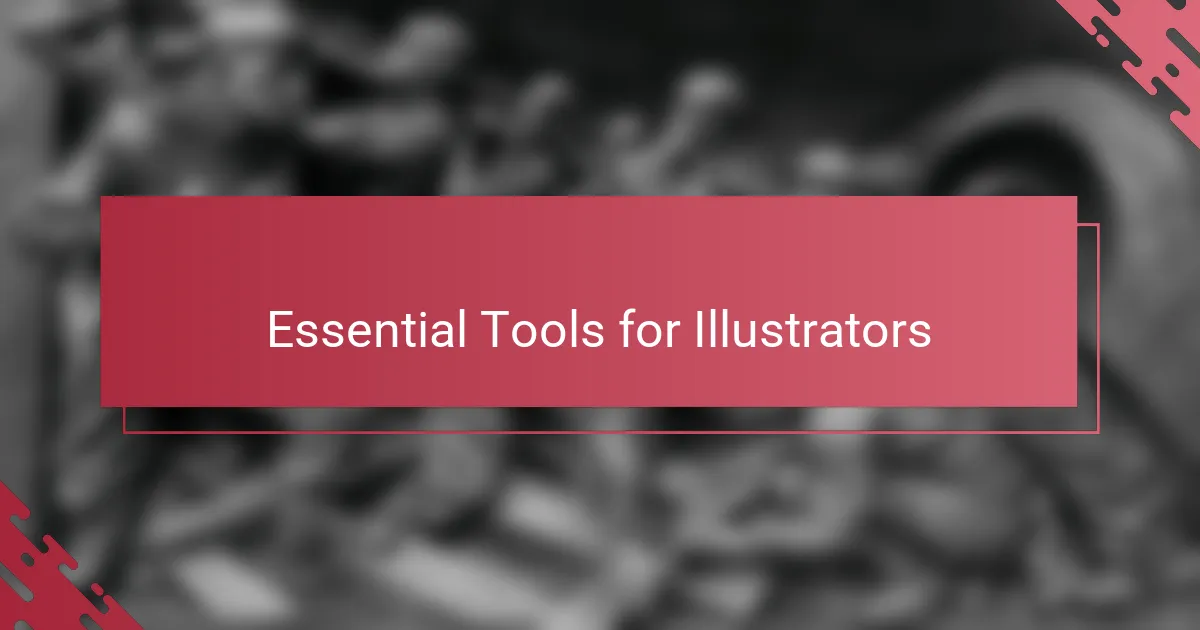
Essential Tools for Illustrators
When I first started, I thought the right tools would magically produce realism. But really, it’s about finding materials that respond to your touch and vision. For me, a set of high-quality pencils with varying hardness was a game-changer—soft for rich shadows, hard for crisp details. Do you remember the frustration of not getting those fine lines right? These pencils became my best friends in solving that.
Digital illustrators often swear by pressure-sensitive tablets, and I can see why. The ability to control stroke opacity and size precisely feels almost like drawing on paper, but with endless possibilities. I still combine my traditional methods with digital tools because they allow me to experiment without fear. Have you tried layering digitally? It opens up a whole new world for blending and correcting.
Brush selection is another tool that’s often underestimated. Different brushes carry different textures and effects, something I discovered after many trial-and-error sessions. A stiff brush creates a rough edge perfect for hair strands, while a soft brush is great for smooth skin gradients. Choosing brushes is more than convenience—it shapes the mood of the portrait. What brushes have you fallen in love with lately?
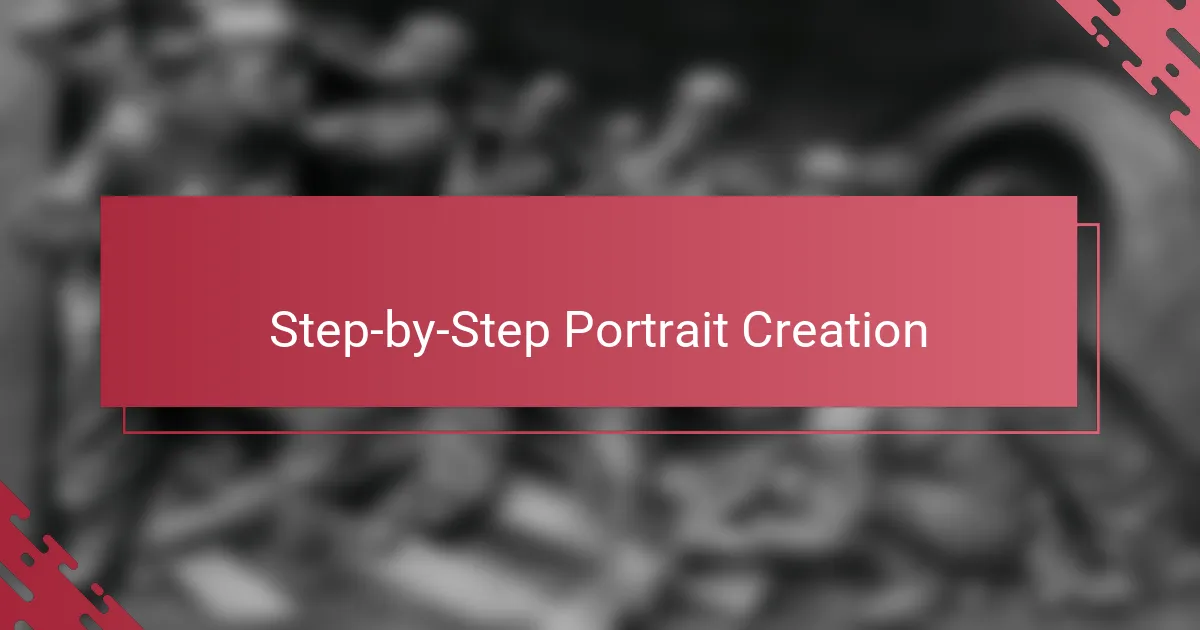
Step-by-Step Portrait Creation
The first step I always take is sketching the basic outlines lightly—this is where the portrait’s structure begins to emerge. Have you ever noticed how a simple line can pivot the entire expression? It’s surprising how much time I spend just getting these initial shapes right, because they set the foundation for everything that follows.
Next, I gradually build up mid-tones and shadows, paying close attention to light sources and their subtle effects on the face. I remember once spending hours on a single shadow because it completely changed the mood of the portrait; that patient layering helped bring depth and realism to the skin. It’s almost like sculpting with light and shadow rather than clay.
Finally, the detailing phase is where the portrait really comes alive—individual hairs, tiny wrinkles, and reflections in the eyes get my full attention. Have you tried zooming in close to add those micro-details? I find it’s both the most challenging and rewarding part because these finishing touches turn an image from a drawing into a living person.
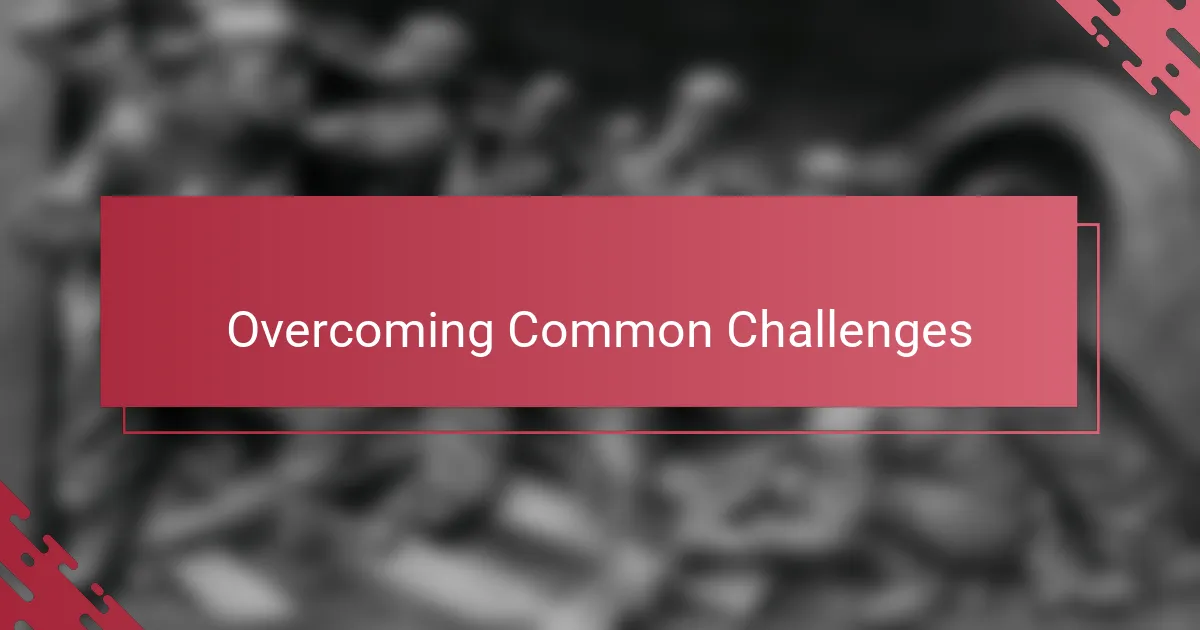
Overcoming Common Challenges
One common challenge I faced was resisting the urge to overwork a portrait. Early on, I kept layering details endlessly, hoping to achieve perfection, only to end up with a stiff, lifeless image. Have you ever caught yourself trapped in that cycle? Learning when to stop and trust the piece was a big breakthrough for me.
Another hurdle was capturing the subtle emotions that make a face feel real. I used to focus too much on accuracy and missed the fleeting expressions that reveal personality. It took patience and observation—sometimes sitting with a subject for hours—to notice those tiny shifts in mood. That’s when the portrait stops being just a likeness and becomes a story.
Finally, balancing technical skill with creative intuition was tough. I constantly questioned if my work was too clinical or too loose. Over time, I realized that embracing imperfections instead of fearing them added authenticity and depth. What if those “mistakes” are actually what breathe life into a portrait? That perspective changed everything for me.
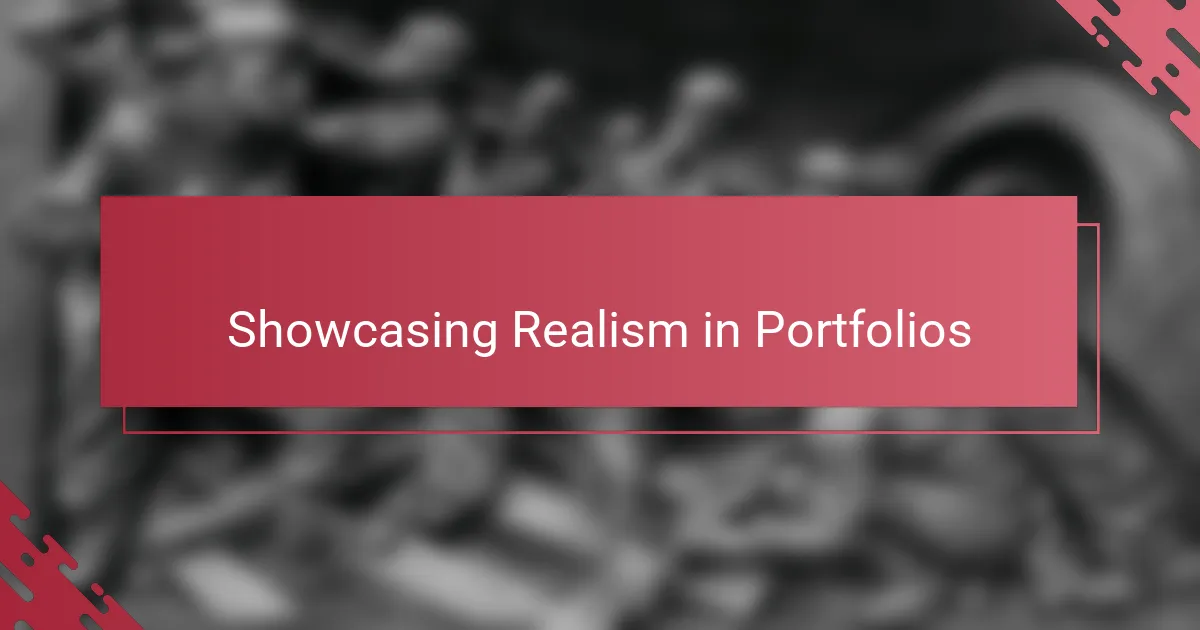
Showcasing Realism in Portfolios
Showing realism in a portfolio isn’t just about displaying flawless technique—it’s about inviting the viewer to connect with the subject on a human level. I’ve learned that including pieces where the imperfections shine through can be more powerful than polished, idealized portraits. Have you ever felt drawn to a portrait because it seemed like the person behind the image was truly present? That’s the effect I aim for.
It took me some time to figure out how best to sequence my realistic works. Placing portraits that gradually reveal more intricate details keeps the viewer intrigued and eager to explore. I also find that mixing close-ups with more distant views gives a balanced sense of intimacy and context, making the portfolio feel alive rather than static.
One tip I always follow is to provide a glimpse into my process alongside the final portrait. Sharing preliminary sketches or layering stages not only showcases my technical journey but also helps clients and viewers appreciate the depth of observation behind the realism. Have you ever been captivated by seeing how a painting evolves? It’s like watching a story unfold—and that transparency builds trust in my craft.
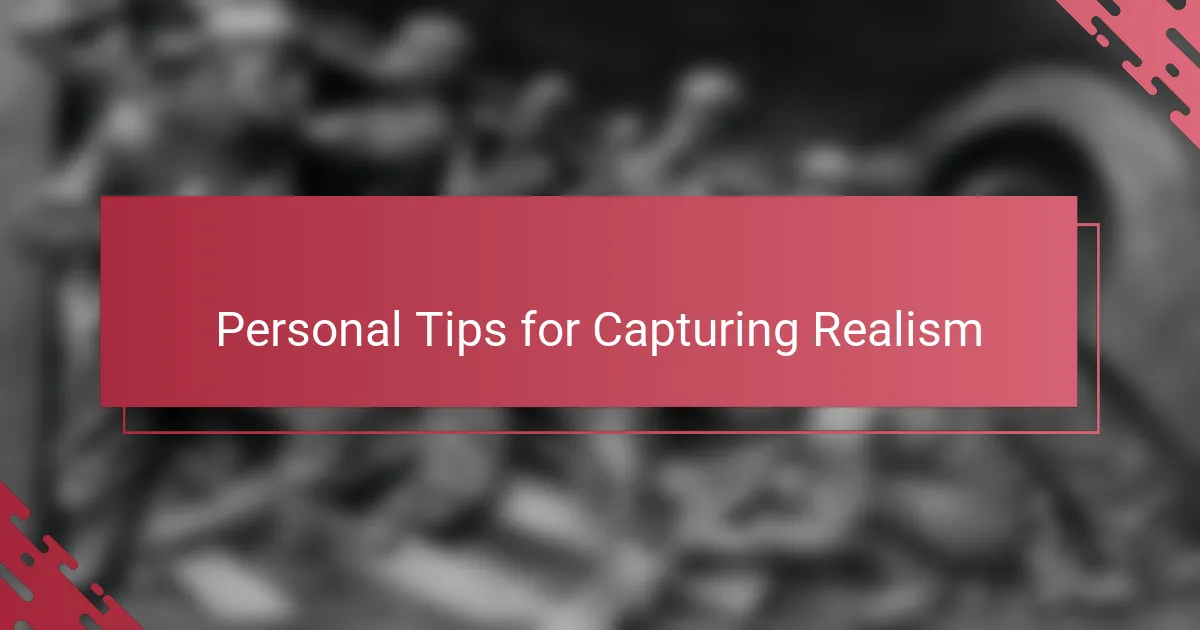
Personal Tips for Capturing Realism
When I first started focusing on realism, I realized that patience was my best ally. Have you ever felt rushed to finish a piece quickly, only to find it lacking depth? Slowing down to really observe the subtle shifts in light and texture transformed how I captured likenesses—each layer became a conversation with the subject rather than just a task to complete.
Another tip that changed my approach was embracing imperfection. Early on, I wanted everything symmetrical and “perfect,” but portraits felt flat because of it. Isn’t it fascinating how a crooked smile or uneven eyelash can make a face feel more alive? Allowing those quirks to show up made my portraits far more relatable and authentic.
Finally, I always make a point to step back frequently and view the work from different distances. Getting too close can cause me to lose sight of the overall impression, while stepping back reveals whether the portrait truly reads as real. Have you tried this? It’s like zooming out on life itself—sometimes you need perspective to capture reality accurately.
